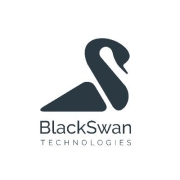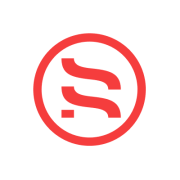IoT Operating Systems provide a robust framework for efficient device connectivity and management essential to unlocking the potential of the Internet of Things.
The top 5 IoT Operating Systems (OS) solutions are Zephyr, Amazon FreeRTOS, QNX Neutrino, Apache Mynewt and Wind River VxWorks, as ranked by PeerSpot users in September 2025. Zephyr received the highest rating of 0.0 among the leaders and holds the largest mind share of 31.8%. Amazon FreeRTOS is the most popular solution in terms of searches by peers.
With the rising popularity of IoT devices, choosing the right OS is crucial for ensuring seamless integration, security, and performance. These systems must handle a diverse range of devices while managing constrained resources effectively and ensuring interoperability.
What are the critical features of IoT Operating Systems?In health care, IoT Operating Systems aid in remote patient monitoring and asset management. Agriculture sees increased crop yield through smart sensors and automation. Manufacturing benefits from predictive maintenance and inventory tracking.
Organizations leverage IoT Operating Systems to streamline operations, reduce costs, and enhance customer experiences through intelligent devices that communicate effectively within a single ecosystem.
| Product | Market Share (%) |
|---|---|
| Zephyr | 31.8% |
| Amazon FreeRTOS | 24.7% |
| QNX Neutrino | 20.9% |
| Other | 22.599999999999994% |









IoT Operating Systems empower industrial automation by providing real-time data processing and seamless connectivity between devices. You can achieve efficient monitoring and control over machinery, optimizing operations and reducing downtime. These OS solutions offer robust security features that protect sensitive data and ensure safe machine interoperability, critical in today's manufacturing environments. By utilizing an IoT OS, you streamlines processes, increase productivity, and gain insights for better decision-making.
What are the security features of IoT Operating Systems?Security is a top priority for IoT Operating Systems. They incorporate features like encrypted communication protocols, secure boot processes, and regular security patches to safeguard your network and devices. You can manage permissions and access control to ensure only authorized users can interact with the system. By implementing a secure IoT OS, vulnerabilities are minimized, protecting sensitive data and maintaining the integrity of your IoT ecosystem against cyber threats.
Which IoT Operating Systems are most scalable for business growth?Choosing a scalable IoT Operating System is crucial for supporting business growth. OS solutions like Amazon FreeRTOS, RIOT, and Zephyr are designed for scalability and flexibility. They handle increasing data loads and device connections efficiently. These systems allow you to expand IoT deployments without compromising performance or security, fostering seamless adaptation to changing business needs while maximizing your investment in IoT technology.
How do real-time capabilities of IoT Operating Systems benefit your applications?Real-time capabilities in IoT Operating Systems are essential for applications requiring swift data processing and immediate response. You gain an edge in sectors like healthcare, automotive, and smart cities where timely data handling is critical. These systems provide you with the ability to process sensor data in milliseconds, enabling rapid decision-making and prompt reaction to changing conditions. By leveraging real-time OS, you ensure your applications remain responsive and efficient in dynamic environments.
What are the power management strategies in IoT Operating Systems?Power management is a vital aspect of IoT Operating Systems, particularly for battery-powered devices. These systems employ strategies like dynamic power scaling, low-power sleep modes, and energy-efficient scheduling to extend battery life while maintaining performance. As a professional, you can optimize device energy consumption, reduce operational costs, and enhance the longevity of your IoT solutions by selecting an OS with advanced power management features tailored to your application's needs.